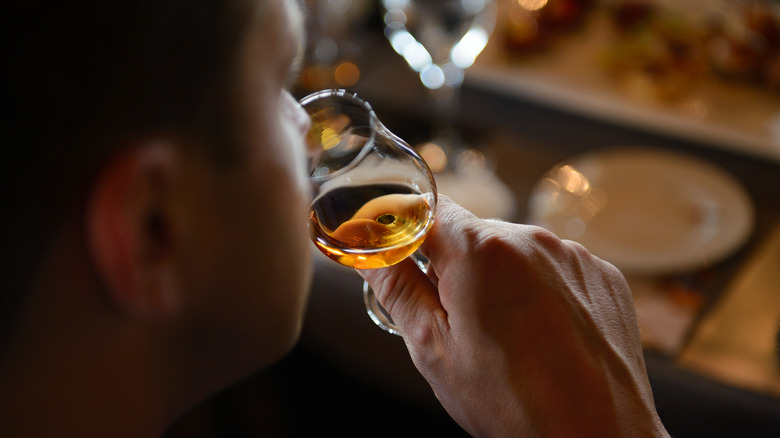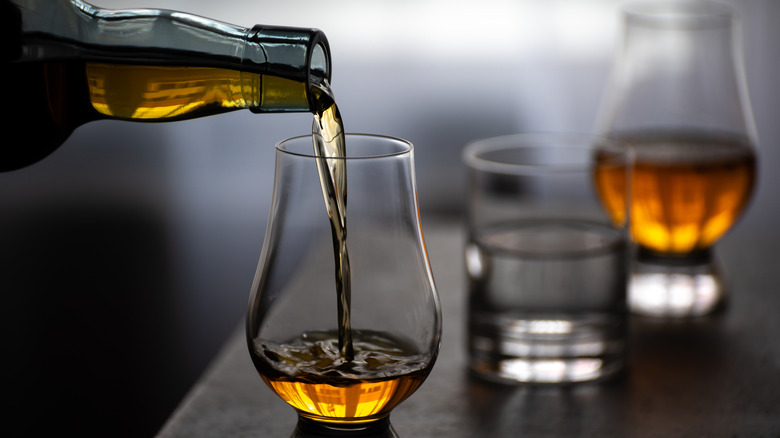How To Choose The Right Bourbons For Your At-Home Tasting, According To An Expert
Bourbon tastings are a fun excuse to get your friends together and try something delicious, but if you're going to do it you might as well do it right. While there are no hard and fast rules when it comes to tastings, there are guidelines you can follow to make the most of the experience. To help us understand what those are, we reached out to Chris Blatner, Executive Bourbon Steward, Founder of Urban Bourbonist, LLC, and Executive Director of Bourbon Charity.
"For an at-home tasting I like to suggest a theme and then working with whiskeys that fall within that theme," Blatner told us. "A very popular and approachable theme that still offers a range of flexibility is bottled-in-bond or bonded." The Bottled in Bond Act of 1897 established quality bourbon in the United States. There aren't as many whiskeys running around today that'll make you blind, but distilleries will still use the label as a sign of quality.
"There are a number of types of whiskeys with different mashbills that carry the bottled-in-bond or bonded designation," Blatner went on. "The best thing about it is that all whiskeys in this category will all have a minimum age of 4 years and they will all be 100 proof or 50% ABV." By focusing on bourbons that share similarities (in this case being bonded), it's easier to pick apart the differences. If there are too many variables, it can be difficult to identify which aspects are coming from what features.
Staying on theme
Bonded bourbons aren't the only option available to you, though. Another popular option would be single-barrel bourbons. Single-barrel bourbons are exactly what they sound like — bourbons that are bottled from a single barrel. Normally, the distillery's master distiller will taste the bourbon and mix different barrels to achieve the brand's signature flavor. It's what makes Bulleit bourbon taste like Bulleit bourbon year after year. With single-barrel bourbons, a distillery will pick a handful of their best barrels and pour them straight into the bottle unblended. This leads to a lot of variation in both flavor and proof, which can make tastings more interesting since the flavors are less tamed.
There are a lot of variables you can play with. Bourbon is most commonly associated with Bourbon County, but there are plenty of great bourbons made outside of Kentucky. You could put a tasting together that spotlights those bottles. You can also narrow your focus to two ends of a spectrum. For example, you could pick six bottles — three of which are high-proof and three of which are low-proof. Similarly, you could pick high-rye bourbons and compare them to wheated bourbons.
The important thing is the theme. Without a theme, it's just some friends getting together and enjoying some liquid amber. Nothing wrong with that, but you could go further. By picking a theme you provide structure to the tasting and you learn more about what you like and don't like in your bourbon along the way.

